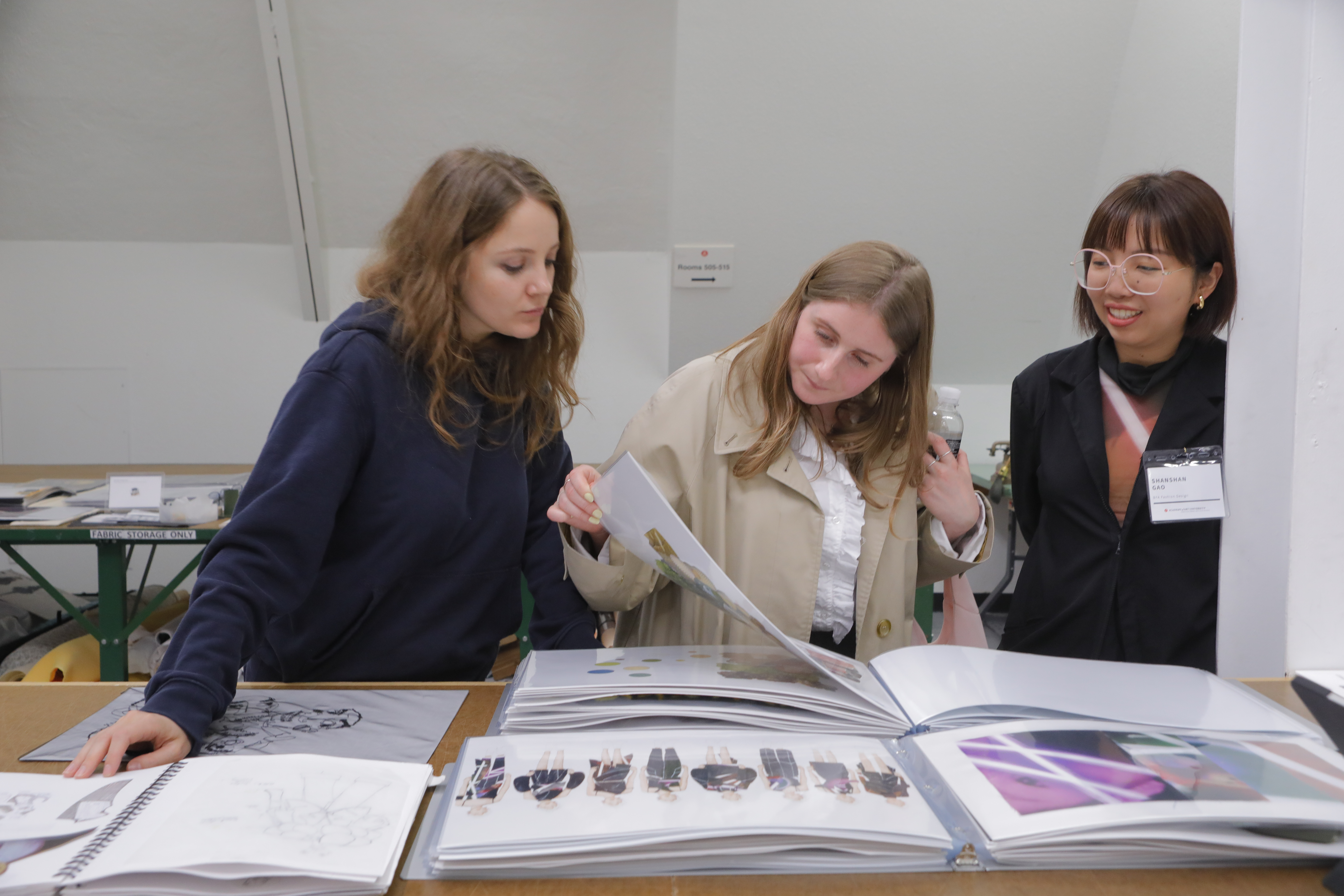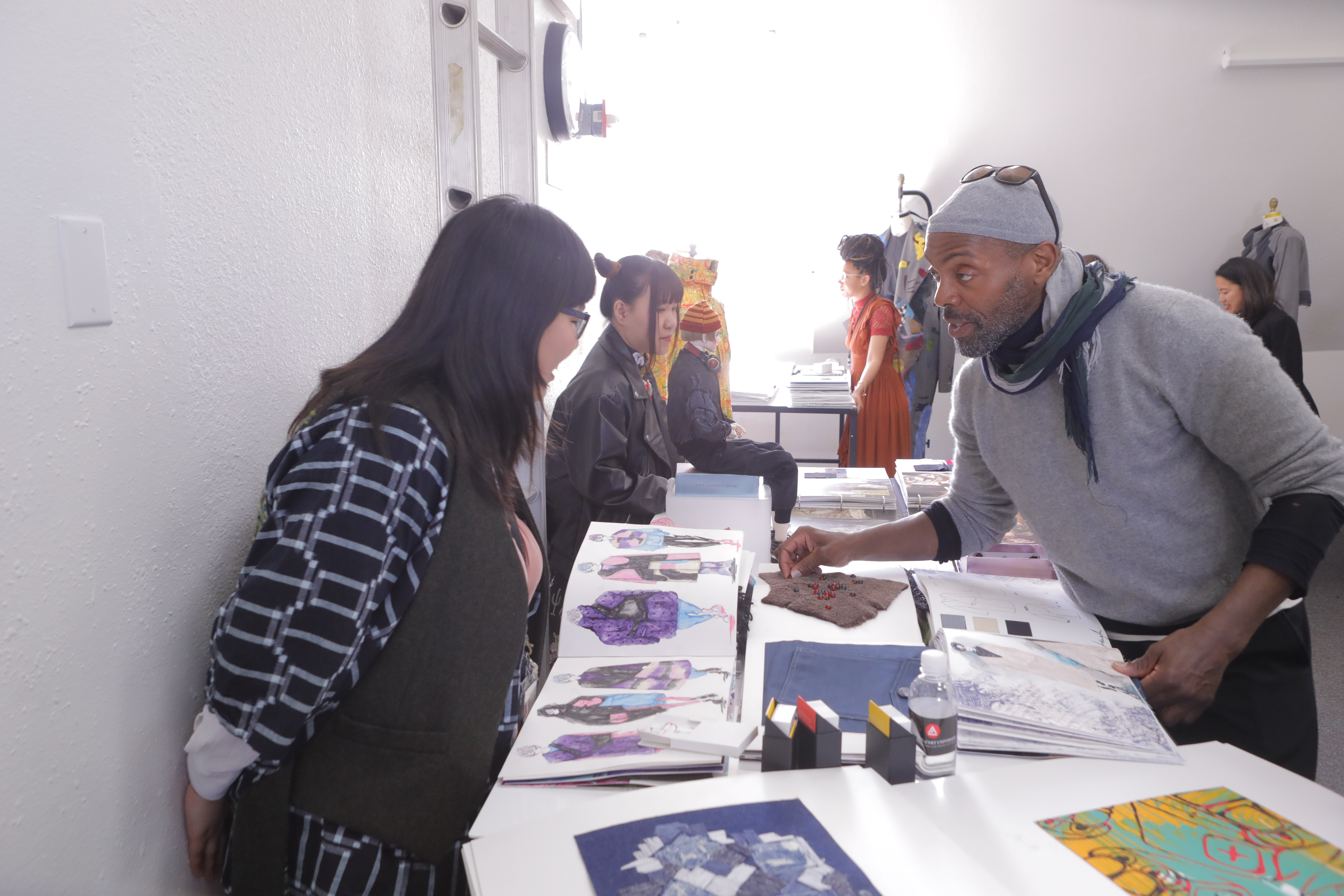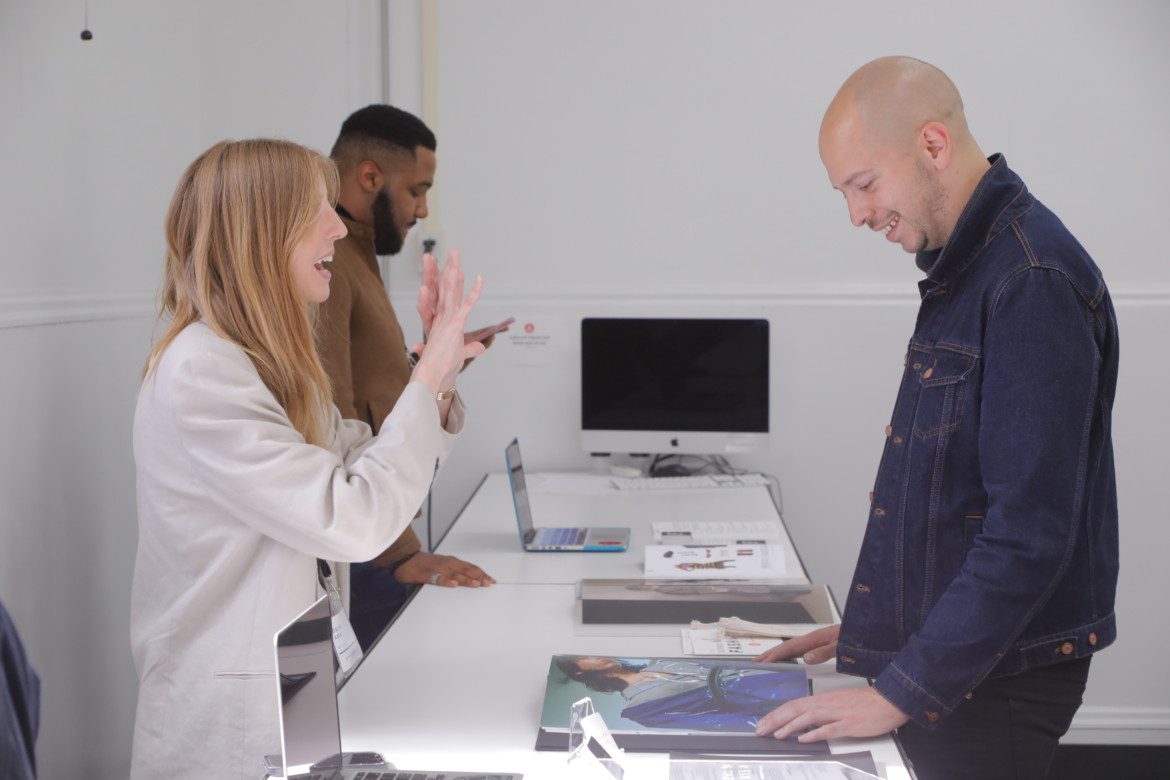The fashion industry pipeline was represented at 625 Polk with the culmination of inspiring student projects and portfolios
By Nina Tabios
Concerts by Janis Joplin and The Grateful Dead, as well as the 2019 Graduation Fashion Show may have taken center stage inside the California Hall’s historic auditorium on 625 Polk but to get a comprehensive look at the entire future of fashion at the Academy of Art University, one had to climb a few flights of stairs.
The School of Fashion’s annual portfolio review, held on May 11 in conjunction with the runway show, gave graduating students—many of whom spent the last four to six years at the Academy and unveiled their proudest projects and collections to the public—one last informal critique before taking their first steps into the professional world.
“All that hard work and effort and time that we really put into everything is paying off now,” said textile design student Jack Gunnin, his neon socks matching his senior collaboration project with B.F.A. fashion design student Clara Chandra. “We get to show fellow students, people from the industry what we’ve created after all this time.”

Olya Kuryshchuk and Lara Lettice Johnson-Wheeler review Shanshan Gao’s portfolio with her. Photo by Randy Brooke.
While some doubling back was needed to see everyone’s work on each floor, the payoff was a sense of familiarity, especially from those students with runway collections. Walking through the hallways of 625 Polk, it felt like you were being welcomed into private spaces, where creativity flourished.
“We were just talking about that—level one, year one, first semester—that’s where we all had our first drawing class,” said So-Hyun An, a B.F.A. fashion design student in Room 501 on the top floor. She had five thick books showing off the collections she made at the Academy, including her senior thesis that paid homage to her two homes in South Korea and Papua New Guinea. “We all started off there and now we’ve come full circle and now we’re ending it in the same room we started off in. It’s a little poetic, it’s cool.”
“This year, the portfolio review was designed to create a more intimate environment for students and industry to engage with each other,” said Simon Ungless, School of Fashion executive director. “The architecture of 625 Polk Street allowed for that.”
The strategy for this year’s review was to start with fashion and knitwear design on the top floor and work your way downstairs to merchandising and journalism. It was like following the industry pipeline, a loose guide on how garments begin in a designer’s sketchbook to production then into stores.
Poke your head into one room and you may find 3-D design and patternmaking, which, explained by B.F.A. student Zackary Lei, is “taking that high-end designer’s sketch or idea and breaking it down so it can be made into a real garment.” Walk into another room and there would be product development students such as Isis Simone: “Product development brings a collection to life. We do everything from sourcing, design, and tech packs (which breaks down the dimensions and construction of a garment). We’re the technical person behind the design.”

Andre Walker discusses design with a student. Photo by Randy Brooke.
Yet no matter each student’s focus, every student’s work seemed to reflect their personal stories. Others had a declaration, like Simone, whose four-season Project Surreal explores the psychological factors influencing futurism told through handbags and accessories. Nearly all of graduate fashion designer Chelsea Grays’ projects were inspired by social and political issues around the world, but none more poignant than her collection on police brutality, which was selected as a 2018 CFDA Geoffrey Beene finalist: “It featured a lot of protest wear; It was a protest collection, really making a statement through clothes.”
Kaiqi Wang, also in the M.F.A. fashion design program, however, had a more playful proclamation to show. Her direct study work on footwear looked straight out of Willy Wonka’s factory: She used old hair extensions to accessorize the cork heel on a pair of colorful, metallic wedges. The same leather from those wedges were used on some sneaker boots fitting for a Lisa Frank-inspired knight headed into outer space. Other projects expressed exuberant women empowerment, translated onto heels inspired by Quentin Tarantino movies and female breasts.
“Everyone’s aesthetic is different,” Wang laughed. “I don’t know if I would wear it or if anyone else would, but I like it.”
Whether on the top floor looking into the creative process of a runway collection or down below listening to a marketing strategy pitch for a haute couture brand, portfolio review was about acknowledging and celebrating each student’s grit and grind throughout their years at the Academy.
“It was really great to go through my old projects again but it was also bittersweet,” Gunnin said, his prints spread across the table. “We all worked so hard and it’s over in a couple weeks.”
“It feels a little unreal to finally be here because we’ve been working towards this for four, five years, some of us six,” An added. “We feel accomplished, we feel happy with our work and we’re all really proud of each other.”
